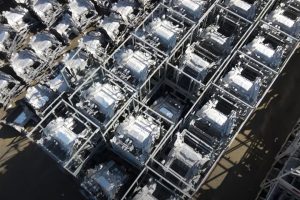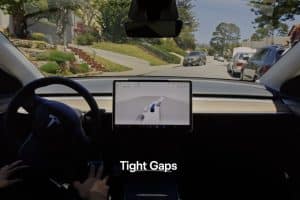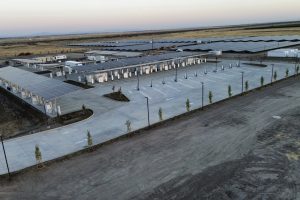- ⚡ GM allows its electric vehicles to access Tesla Superchargers through a NACS DC adapter, adding more charging options for users.
- 🔌 GM’s electric vehicle owners now have access to over 231,800 public Level 2 and DC fast chargers in North America, thanks to Tesla Supercharger Network integration.
- 🇺🇸 The GM-approved NACS adapters are initially available for US customers and will be offered in Canada by the end of the year.
- 💰 Unlike Rivian and Ford, GM charges $225 for each NACS DC adapter required for charging at Tesla Superchargers.
- ⚠ GM warns that using non-GM adapters could void parts of the vehicle’s limited warranty due to potential battery damage.
In a significant move towards expanding charging infrastructure for electric vehicles, General Motors (GM) has announced a strategic partnership allowing their electric vehicles (EVs) to leverage Tesla’s Supercharger network using a NACS (North American Charging Standard) DC adapter. This announcement is reshaping the landscape of EV charging by offering GM customers many more charging options, but it also comes with some caveats and considerations. In this blog post, we’ll explore the details of this initiative, the broader implications for GM and its customers, and how it stacks up against competitors.
A New Charging Horizon for GM’s Electric Vehicles
GM’s collaboration to support Tesla’s Supercharger network marks a leap towards an integrated charging environment in North America. This addition means that GM electric vehicle owners now have access to a total of over 231,800 publicly available Level 2 and DC fast chargers across the continent.
Why This Matters
- Broader Charging Infrastructure: With the added access to Tesla’s Superchargers, GM EV drivers can benefit from a more extensive, reliable charging network, reducing the ‘range anxiety’ that often accompanies EV ownership.
- Ease of Use: As one of the largest and most recognizable charging networks, Tesla’s infrastructure offers amenities and consistent reliability. The seamless integration with GM enhances user convenience.
Details of the GM NACS Adapter
- Availability: Currently, the GM-approved NACS adapters are available for US customers, with plans to extend availability to Canadian customers by year-end. This phased rollout ensures that more users gradually gain access to this expansive network.
- Cost: Unlike some competitors, GM charges a fee of $225 per NACS DC adapter. While companies like Rivian and Ford offer these adapters complimentary, GM has opted for a different pricing strategy.
- Warranty Considerations: A crucial piece of advice from GM is to utilize GM-approved adapters only. Non-GM adapters can result in battery damage, potentially voiding portions of the vehicle’s limited warranty. This highlights the importance of using officially sanctioned products to ensure long-term vehicle health.
Comparing Industry Standards
The charging adapter policy among automakers varies, reflecting different strategies and customer incentives. Here’s how GM compares to others like Rivian and Ford:
- Rivian and Ford: Both companies offer NACS adapters for free, enhancing customer satisfaction and providing a cost-efficiency advantage over GM.
- GM’s Strategic Pricing: By pricing the adapter, GM introduces a measured cost-benefit decision for its users, potentially earning additional revenue but also risking customer dissatisfaction.
Analyzing the Impact on GM EV Sales
This strategy could considerably impact GM EV sales. Here’s why:
- Enhanced Appeal: Access to Tesla’s Supercharger network might position GM’s EVs as more viable and attractive options for potential customers who value charging flexibility.
- Market Differentiation: While the cost of adapters might deter some customers, the robust charging network availability could outweigh the initial expenditure for many.
- Warranty Assurance: By advocating for GM-approved adapters, GM keeps a tight rein on product quality and service reputation, which could foster customer trust and relia bility in the long haul.
Conclusion
GM’s integration into Tesla’s Supercharger network via NACS adapters is a bold step towards solidifying its stance in the competitive EV landscape. Although the financial aspect of charging for adapters differentiates it from competitors, it can still be seen as a move that augments value and convenience for GM EV owners. As the market evolves, this initiative could be pivotal in both customer acquisition and retention, as well as setting standards for charging interoperability.





